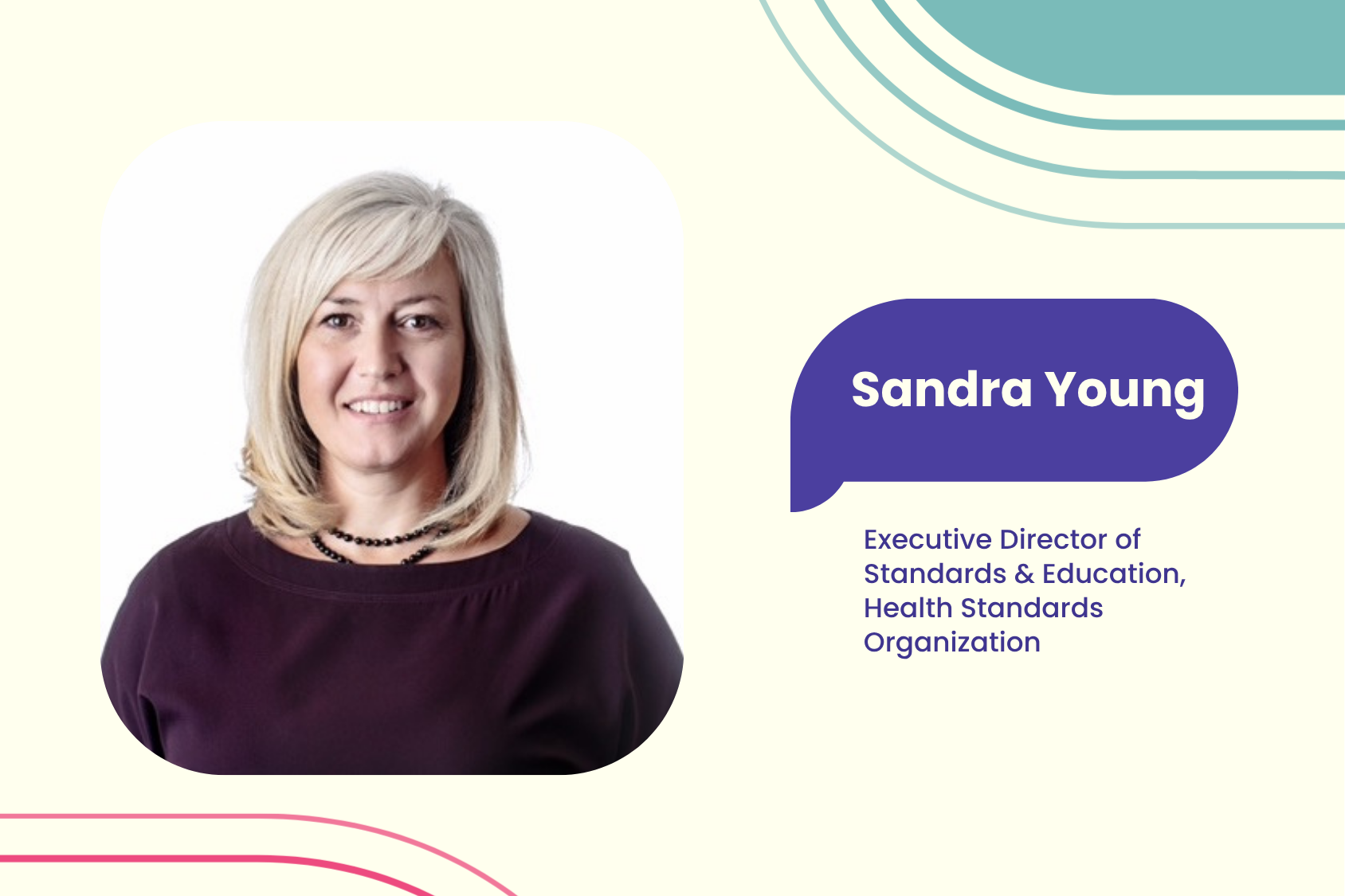In this section :
The 2025 theme for Canadian Patient Safety Week, All Voices for Safer Care, reminds us that building safer healthcare systems isn’t the responsibility of one person or one role — it’s something we create together, by supporting every role and building trust across the system.
Throughout this blog series, we’re sharing the stories of champions from across Canada who are helping redefine what safer care means today: from point of care to leadership, from lived experience to learning systems.
Their insights show how building safer systems, supporting all roles, and listening with curiosity are essential steps toward safer, more equitable care for everyone.
All Voices for Safer Care reminds us that safer health care is not created by a single person or organization — it’s built together. By elevating every voice, from patients and caregivers to providers and system leaders, we can create the trust, curiosity and collaboration needed for meaningful change.
Sandra Young, Executive Director of Standards & Education at Health Standards Organization (HSO), is one of those voices. Her work is helping turn standards into resilient systems that keep patients, providers and communities safer and more equitable every day.
Tell us a bit about your role and the community or organization(s) you work with.
As Executive Director of Standards and Education at Health Standards Organization, I’m proud to work alongside a highly skilled team for Canada’s only Standards Development Organization dedicated to health and social services. National Standards of Canada truly are significant levers for system wide change and come to life through our affiliate Accreditation Canada. One of the things I value most about HSO is our inclusive and people-centred approach. At the heart of our work are our highly valued technical committee members, who lead the standards development process. On these committees, you’ll find not only clinicians, administrators and academics, but also patients, caregivers and community partners. All perspectives are essential to shaping our shared understanding of the health care system, so we can co-produce relevant and meaningful standards, grounded in the evidence.
What does safe care mean to you?
For me, safer care is about reducing the risk of harm. It’s not realistic to expect zero harm, but we can always strive for ongoing, continuous quality improvement and shared learning, while focusing on proactive, safe and reliable practices. Safe care recognizes that the experience of our patients and providers is inextricably bound, and to quote our CEO – there is no quality and safety without a healthy and safe workforce.
Safer care is also about recognizing that harm is not only physical but includes psychological and cultural harm. I cannot overstate the significance of active and visible leadership to cultivate a culture of safety where teams feel safe to speak up for safety and understanding what happened, not who did it, to support shared learning.
How has your understanding of safety evolved over time?
I have worked in health care for 36 years where reporting of hazards, close calls and safety events predominated safety procedures. It wasn’t until I became a Nurse Practitioner that I learned about optimizing human factors and received training in systems analysis. The first time I was exposed to safe and reliable practices was in 2012 from Allan Frankel. At HSO we have put patient safety on the front burner and balanced our approach to Patient Safety I – or retrospectively analyzing when things go wrong and Patient Safety II – proactively emphasizing what is going right - in the release of Required Safety Practices this past spring. Safety isn’t just about avoiding errors; it’s about building reliable and resilient people and systems.
This shift has been transformative. In the past, safety was often about compliance—making sure policies were followed and incidents were reported. Now, we’re focused on building systems that can adapt and thrive in complexity. For example, our Required Safety Practices (RSPs) are designed to help organizations anticipate challenges, rather than reacting to problems. We encourage teams to learn from what goes well, not just from mistakes, and to share those lessons across the system.
Can you share something you or your team has done that made care safer?
I come back to the Required Safety Practices (RSPs) as evidence-informed, measurable safety imperatives designed to prevent, respond to, and manage physical, psychological, and cultural harm. We have added accountabilities at all levels of the organization, as safety is everyone’s business, and included measuring and monitoring. While we have streamlined from 38 to 24 RSPs reducing operational burden for organizations, we have also added four new RSPs that address emerging and current safety risks: 1) opioid stewardship, 2) health equity, 3) early recognition and response to acute clinical deterioration, and 4) partnering with clients to improve safety.
What’s one action people in roles like yours can take to support a culture of safety?
Collaboration and integration. We are better together. When national organizations come together to influence change this provides standardization and reliability across the system. And in turn when these standards are scalable from the 15-bed hospice to the provincial health system then local outcomes roll up into broad impact. Integration of care across teams, sites, and sectors reduces fragmentation, improves outcomes and most importantly reduces harm. We all know the greatest risk for patients is at times of transition, when we learn from the patient and provider experience during information or care transfers - we can close the gaps of risks. Everyone has a role to play, and every voice matters.
Together, we can turn standards into action and build safer systems for everyone.
Explore HSO’s standards and join the quality improvement community at: www.healthstandards.org.
